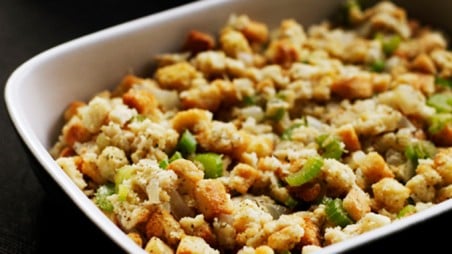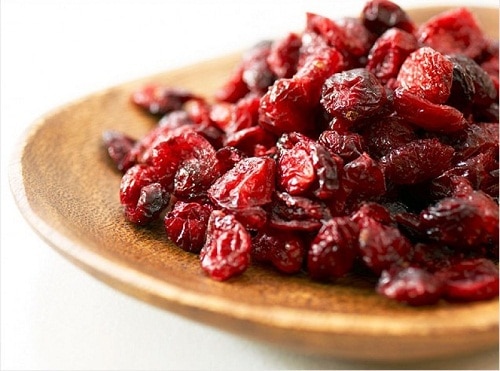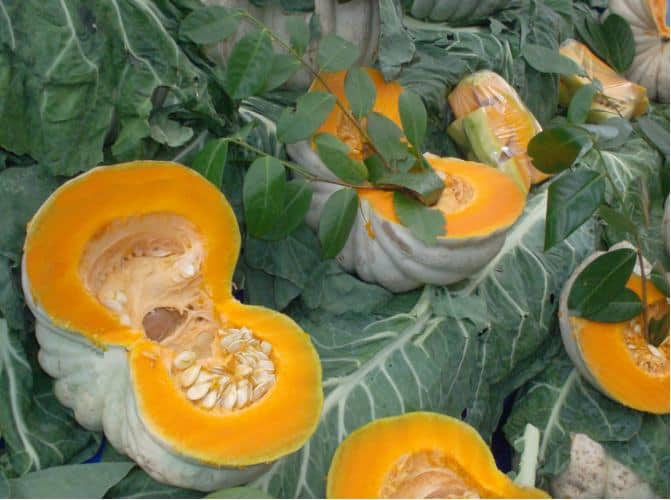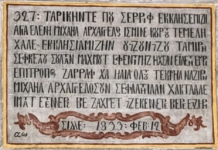Yes, I just did that. Referred to the joke-question we all hear from home: Do they eat turkey in Turkey? Well, yes, yes they do. And if you are missing those flavors from home, fear not because Istanbul has everything to make all the fixins’ for your Thanksgiving celebrations. Sure, it takes a bit of elbow grease and some time to track things down, not to mention a bit of creativity here and there. But when friends and family from back home are posting pics of their feasts and the nostalgia sets in, you will be glad you spent the time and effort on your own turkey dinner.
First things first: the bird. Whole turkeys are easier to come by around New Year’s since that is when a large number of Turkish families will roast up a bird. If you are lucky, you can see the turkeys dressed up as things like Santa (and go-go dancers), but that is another post all together (check out the Kadıköy fish market around New Year’s to see what I mean). Anyway, this isn’t much help for those of us who celebrate Thanksgiving in October or November. But there is turkey to be had here in the autumnal ‘Bul. Word on the street is that you can order whole turkeys from places like Metro, Günaydın, and Santral Şarküteri in Bebek.

I myself am cooking up a proper feast this year and everything I will use has been found in close proximity to my home. I know that there are probably other ways or places to get the ingredients for your meal, but hopefully you can glean from my experience some ideas to make your own delicious and non-imported turkey dinner.
To begin, I read copious amounts of Thanksgiving Day recipes on The Kitchn. This year my favorite post was about making the meal in batches beforehand. I was intrigued by this idea since I, like many other expats, will be working on Thanksgiving and plan on giving a small dinner party the following day.
So far I have my turkey stock simmered and put away. For the stock I used turkey wings (kanat found at Real), the tops of celeriac (kereviz), bay leaf (defne) and onions. While that was bubbling away, I got to work on the stuffing by sautéing the stalks from kereviz with garlic, onion and dried sage (adaçayı), then from the stock pot I picked the meat off of the bones and popped that along with the sautéed onion and “celery” mixture into the freezer. I also cut up three loaves of stale bread from the corner bakery and stored it in the fridge. The day before cooking time, I will take these items out of the freezer and follow the recipe for stuffing. Easy peasy. To make it even easier, you could also use the bouillon cubes made by Knorr, as I have done in the past.

Next I reconstituted some dried cranberries, which can be found in large grocery stores and kuruyemiş places. They are usually called yaban mersini, which is also what blueberries are called, so just have a look at them before you buy to make sure you have the right ones. To that I added a mandalina peel and ground cloves (karanfil). (OK, I admit it, the ground cloves were imported, but cloves can be found here.) Then using my small food processor I whirred the fragrant mixture with a touch of water into a delicious cranberry sauce.
The night before I will peel and chop potatoes, more kereviz and sweet potatoes (a friend grows them here in Turkey, but they can be found in various green grocers for a price) and store those in water for the next day when I will prepare them into individual dishes. If you keep your eyes open, you can find marshmallows made by Haribo. They are pink and white, but they are proper marshmallows and will beautifully top a sweet potato casserole. In past years I have successfully used pumpkin (bal kabağı) instead of sweet potatoes.

I will also make a pumpkin pie from pumpkin which I steamed, pureed and froze a few months back. Pumpkin pie doesn’t require condensed milk, so I will use cream (krema). You should be able to find all of the spices in most big grocery stores, but they are most definitely sold at Ucuzcular Baharat in the Spice Bazaar (Mısır Çarşısı). And Martha Stewart’s press in pie crust is a life saver. Whip some vanilla sugar (vanilya şekeri) into some krema and, voila, you have your pie topping.
For the bird, I was unable to find a whole bird in my neck of the woods, but I did find turkey parts at Real in Ümraniye, which will do just fine. My back up plan was to roast a chicken, which works in a pinch.
Last but not least is the gravy. My plan is to use the pan drippings from the breast and legs as well as the left over stock from the stuffing.
And that covers the basics for a festive and authentically tasty Thanksgiving meal.
If you are cooking for the first time, check out Melissa Clark’s videos on the New York Times or The Kitchn for some great tutorials.
What do you do for Thanksgiving abroad? Any tips on where to find ingredients or any Turkey-friendly recipes you’d like to share?
Annie Özsaraç is a contributor to Yabangee.











You can order big whole turkeys from Macrocenter
Happy Thanksgiving to all….
It was written by Giancarlo Casale, PhD. Giancarlo Casale is currently an assistant professor ( I had come across to this text long time ago around earlier 2000 I should say) at the Department of History at the University of Minnesota.
Talking Turkey: The Story of How the Unofficial Bird of the United States Got Named After a Middle Eastern Country
How did the turkey get its name? This seemingly harmless question popped into my head one morning as I realized that the holidays were once again upon us. After all, I thought, there’s nothing more American than a turkey. Their meat saved the pilgrims from starvation during their first winter in New England. Out of gratitude, if you can call it that, we eat them for Thanksgiving dinner, and again at Christmas, and gobble them up in sandwiches all year long. Every fourth grader can tell you that Benjamin Franklin was particularly fond of the wild turkey, and even campaigned to make it, and not the bald eagle, the national symbol. So how did such a creature end up taking its name from a medium sized country in the Middle East? Was it just a coincidence? I wondered.
The next day I mentioned my musings to my landlord, whose wife is from Brazil. “That’s funny,” he said, “In Portuguese the word for turkey is ‘peru.’ Same bird, different country.” Hmm.
With my curiosity piqued, I decided to go straight to the source.
That very afternoon I found myself a Turk and asked him how to sayturkey in Turkish. “Turkey?” he said. “Well, we call turkeys ‘hindi,’ which means, you know, from India.” India? This was getting weird.
I spent the next few days finding out the word for turkey in as many languages as I could think of, and the more I found out, the weirder things got. In Arabic, for instance, the word for turkey is “Ethiopian bird,” while in Greek it is “gallapoula” or “French girl.” The Persians, meanwhile, call them “buchalamun” which means, appropriately enough, “chameleon.”
In Italian, on the other hand, the word for turkey is “tacchino” which, my Italian relatives assured me, means nothing but the bird. “But,” they added, “it reminds us of something else. In Italy we call corn, which as everybody knows comes from America, ‘grano turco,’ or ‘Turkish grain.'” So here we were Back to Turkey again! And as if things weren’t already confusing enough, a further consultation with my Turkish informant revealed that the Turks call corn “misir” which is also their word for Egypt!
By this point, things were clearly getting out of hand. But I persevered nonetheless, and just as I was about to give up hope, a pattern finally seemed to emerge from this bewildering labyrinth.
In French, it turns out, the word for turkey is “dinde,” me aning “from India,” just like in Turkish. The words in both German and Russian had similar meanings, so I was clearly on to something. The key, I reasoned, was to find out what turkeys are called in India, so I called up my high school friend’s wife, who is from an old Bengali family, and popped her the question.
“Oh,” she said, “We don’t have turkeys in India. They come from America. Everybody knows that.”
“Yes,” I insisted, “but what do you call them?”
“Well, we don’t have them!” she said. She wasn’t being very! helpful. Still, I persisted:
“Look, you must have a word for them. Say you were watching an American movie translated from English and the actors were all talking about turkeys. What would they say?”
“Well…I suppose in that case they would just say the American word, ‘turkey.’ Like I said, we don’t have them.”
So there I was, at a dead end. I began to realize only too late that I had unwittingly stumbled upon a problem whose solution lay far beyond the capacity of my own limited resources. Obviously I needed serious professional assistance. So the next morning I scheduled an appointment with Prof. Sinasi Tekin of Harvard University, a world-renowned philologist and expert on Turkic languages. If anyone could help me, I figured it would be Professor Tekin.
As I walked into his office on the following Tuesday, I knew I would not be disappointed. Prof. Tekin had a wizened, grandfatherly face, a white, bushy, knowledgeable beard, and was surrounded by stack upon stack of just the sort of hefty, authoritative books which were sure to contain a solution to my vexing Turkish mystery. I introduced myself, sat down, and eagerly awaited a dose of Prof. Tekin’s erudition.
“You see,” he said, “In the Turkish countryside there is a kind of bird, which is called a “çulluk”. It looks like a turkey but it is much smaller, and its meat is very delicious. Long before the discovery of America, English merchants had already discovered the delicious çulluk, and began exporting it back to England, where it became very popular, and was known as a ‘Turkey bird’ or simply a ‘turkey.’
Then, when the English came to America, they mistook the birds here for çulluks, and so they began calling them ‘turkey” also. But other peoples weren’t so easily fooled. They knew that these new birds came from America, and so they called them things like ‘India birds,’ ‘Peruvian birds,’ or ‘Ethiopian birds.’ You see, ‘India,’ ‘Peru’ and ‘Ethiopia’ were all common names for the New World in the early centuries, both because people had a hazier understanding of geography, and because it took a while for the name ‘America’ to catch on.
“Anyway, since that time Americans have begun exporting their birds everywhere, and even in Turkey people have started eating them, and have forgotten all about their delicious çulluk. This is a shame, because çulluk meat is really much, much tastier.”
Prof. Tekin seemed genuinely sad as he explained all this to me. I did my best to comfort him, and tried to express my regret at hearing of the unfairly cruel fate of the delicious çulluk. Deep down, however, I was ecstatic. I finally had a solution to this holiday problem, and knew I would be able once again to enjoy the main course of my traditional Thanksgiving dinner without reservation.
Now if I could just figure out why they call those little teeny dogs Chihuahuas….
Interesting. Don’t you think so?
It’s the 21 century people! You can get EVERYTHING on the Internet, specially in Turkey… Here you go. They deliver ON THE SAME DAY!! YOU’RE WELCOME!
http://www.banvit.com/urun-listesi/poset-butun-hindi/2-12-66/
Loved this article. I am your biggest fan.